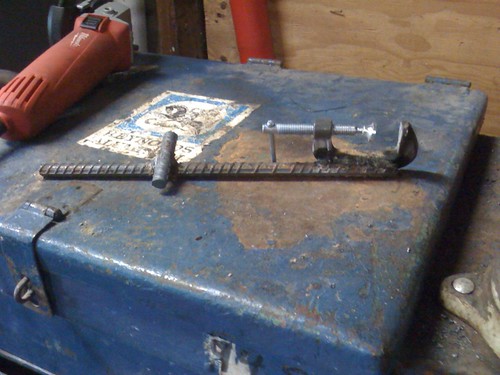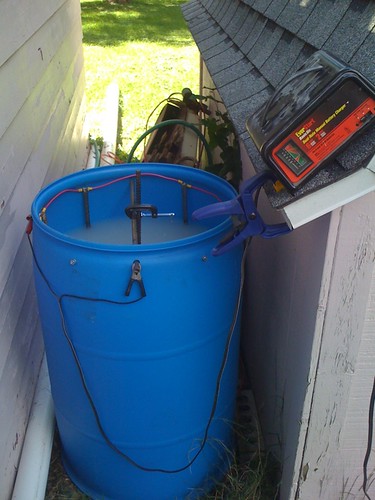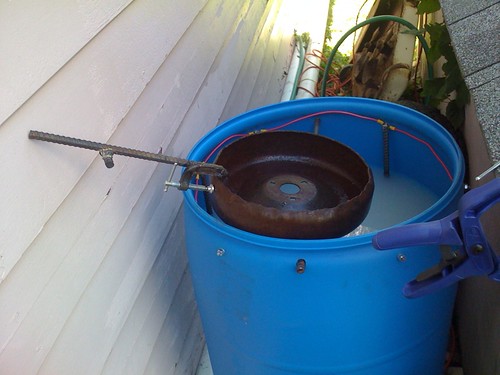I had a chance to finish setting up the electrolysis tank and to try it out.
I took an extra piece of rebar and welded a C-clamp to it to hang parts from.
 Untitled
Untitled by
yamaguy, on Flickr
I drilled holes in the barrel to pass another piece of rebar to support the part hanger.
 Untitled
Untitled by
yamaguy, on Flickr
I placed it outside between the garage and shed. Don't mind the placement of the charger, I plan to put it in the garage on the work bench so it will be out of the weather.
 Untitled
Untitled by
yamaguy, on Flickr
I started to "treat" the depth guide wheel for my Brinly Cat-0 plow, but took it out after a few hours so that I could cook the battery tray for the 882.
 Untitled
Untitled by
yamaguy, on Flickr
Even though it was only in there for 3 hours you could tell a big difference in person, but it will take an overnight soak to really clean it up.I had the battery tray cooking overnight and there was a huge improvement in the rust. Pics to follow
Overall so far I would say if you have odd shaped parts that are rust covered and don't have a sandblaster the electrolysis tank is the way to go. I would say if you follow the link I posted earlier only use a 1/3 cup of the washing soda per 5gallons of water (I used more). It also seems that once the water has a bit of rust in it it seems to allow the battery charger to be turned to a higher setting. When I put the first piece in I had to turn it down to the 6v setting or the amp gauge on the charger was almost maxed out. With my second piece I can have the charger at max output. I am not sure if things go faster at the higher setting, so if anyone has any insite that would be great.